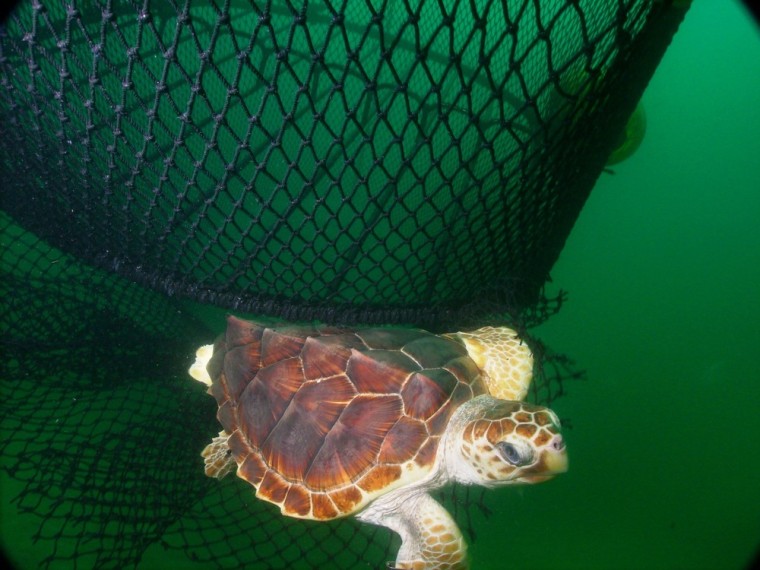Loggerhead sea turtles along the West Coast will be listed as "endangered" but those on the East Coast won’t, the Obama administration said Friday in a split decision that had environmentalists seeing a mixed message about the threats pushing this ancient species toward extinction.
Populations on both coasts have dropped significantly in recent decades, though Atlantic loggerheads rebounded a bit in recent years. The key threats are getting tangled in fishing nets, accidentally being hooked on fishing lines and loss of nesting habitat.
"While today’s designation gives new hope for North Pacific loggerheads, it leaves the fate of the species in the Atlantic at risk," Whit Sheard, a lawyer with the conservation group Oceana, said in a statement.
The decision "ignores the massive impacts of the BP oil spill and increasing threats from shrimp-trawl fisheries," added Chris Pincetich, a biologist with the Turtle Island Restoration Network.
The decision, which followed a four-year petition by Oceana, TIRN and the Center for Biological Diversity, moved North Pacific populations from "threatened" to "endangered" status, while leaving the Northwest Atlantic ones at "threatened" — a status held since 1978.
The groups were also upset that the administration did not propose ways to protect loggerhead habitat. "The government has delayed proposing any critical habitat for loggerhead sea turtles, which is an important step in achieving improved protections for key nesting beaches and migratory and feeding areas in the ocean," Oceana stated.
Oceana suggested that the Obama administration had caved in to Republican opposition to environmental regulations.
"The government completely dismissed its own scientific conclusions," said Oceana marine wildlife manager Elizabeth Griffin Wilson. "Listing decisions are legally required to be based entirely on science. This is yet another example of the U.S. government folding because of political pressure."
South Florida has the largest nesting beaches for loggerheads in the Northwest Atlantic. In the Pacific, loggerheads nest in Japan but spend much of their time along the coasts of Mexico and Southern California.
The Center for Biological Diversity estimates loggerhead populations along the Pacific coast dropped 80 percent over the last decade.
Before a recent rebound, Atlantic populations had declined by almost 40 percent since 1998, the center estimates.
Loggerheads and other sea turtles have benefited from new fishing nets that allow them to escape entanglement, but the fact that those nets are not mandatory means thousands are still killed each year. In the U.S. shrimp trawling industry alone, a recent study found, some 4,600 sea turtles still die each year.
Those new nets were part of the rationale cited for not listing northwest Atlantic turtles as "endangered" — a status that the administration had earlier proposed.
"Some of the fisheries bycatch effects appear to have been resolved through requirement of turtle excluder devices in shrimp trawlers, and longline fishery effort has declined due to fish stock decreases and economic reasons," the U.S. Fish & Wildlife Service said in a statement.
"Substantial conservation efforts are underway to address" other threats, it added.
Loggerheads are one of six species of sea turtles found in the U.S. All are designated as threatened or endangered.
